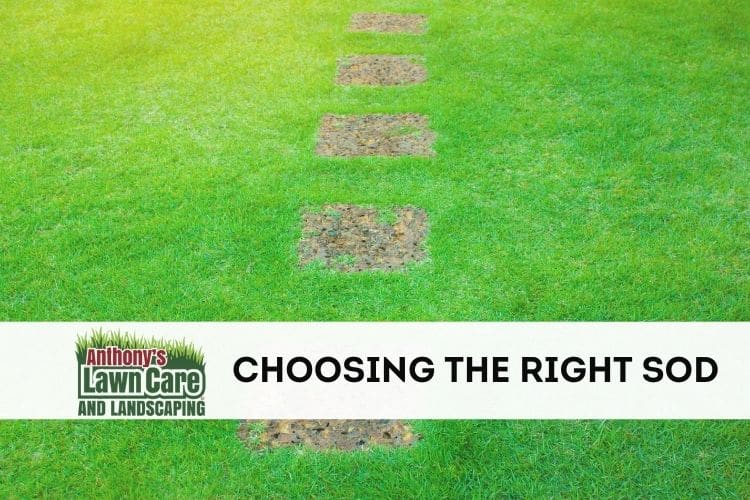Installing sod is a proven way of going quickly from having no grass to having a beautiful lawn. Sod can be installed over an entire lawn, saving you the time it takes for grass seed to sprout and grow, and can also be applied to a smaller area to fill-in a grassless patch.
Below we will discuss four grass varieties that are great in the Bloomington, Indiana, area and which Anthony’s proudly provides to our customers.
Zoysia
The first grass we’ll look at is Zoysia, also known as Zoysiagrass. This grass is from Asia but has been used in the United States since the 1800s. It is a warm-season grass, which means it will experience its growing season in later spring through the summer and will be dormant in the cooler months. While Zoysia is more adapted to warm climates, it is much more cold tolerant than other warm-season grasses, so it does better in places like Indiana with both cold and heat.
The biggest benefits to Zoysia are that it is a very durable, low-maintenance grass — for example, it doesn’t need as much water as other grasses, and it can handle a lot of foot traffic better due to its thick growth. Also, the thick nature of Zoysia prevents most weeds from being able to fight their way through. Overall, Zoysia will establish a full, healthy lawn that doesn’t have a lot of maintenance, though it takes some time to get fully established compared to other varieties.
Bluegrass
Despite the most popular variety — Kentucky Bluegrass — being named after an American state, bluegrass actually originated from the old world, being common in parts of Europe, Africa and Asia. It has been highly cultivated here in the United States, though, and there are now dozens of varieties of bluegrass, with some suitable for shade, sun, cold and warmth.
It is a cool-season grass; however, so bluegrass does not tolerate the heat as well as Zoysia. Like other cool-season grasses, bluegrass will grow in the spring and the fall, rather than the summer. Bluegrass does have higher water needs due to its shallower roots, but given enough water it is a sturdy, attractive grass that doesn’t take too much maintenance.
Bermuda
Native to the tropics, Bermudagrass is a warm-season grass that also does well in transitional zones. Like other warm-season grasses, the growth period will be in the late spring and summer, and the best time to plant will be in the spring. Bermudagrass is not as cold tolerant as some other varieties of warm-season grasses, so it should probably not be planted in colder regions. There may be some varieties that will do better in transitional zones though. Bermudagrass doesn’t require much water and can survive very hot, dry summers.
One thing to consider when choosing Bermudagrass is its high growth rate. This is an advantage when planting or when a section has been damaged, and it makes for a durable walking surface. But it can also mean more difficulty managing the growth, since more mowing and edging will be necessary.
Fescue
Fescue grasses are among the most popular varieties in the country, especially in northern states. They are native to Europe but have been used in the United States for over 200 years. Fescues are cool-season grasses, meaning they will better tolerate harsh winters and will grow in both spring and fall but be dormant in the summer. Because there are so many varieties, fescue has been developed to be very heat tolerant for a cool-season grass.
Growing in a bunch formation, fescue is a strong, durable option for lawns that hardly needs to be dethatched or fertilized. They are notorious for being good in shady areas and some varieties can handle sun too. Too much sun and heat can leave brown spots though.
Need help picking a grass type for sod? Call Anthony’s at (812) 345-5694
All of the above options are varieties that we stand by and can make a great lawn in the Bloomington, Indiana, area. What the exact right choice is for your lawn will depend on moisture, sun, the amount of time you can give to maintenance, and your personal preference. If you want help choosing or installing sod, give Anthony’s Lawn and Landscaping a call at the number above. Remember: planting sod isn’t just about laying it. For the grass to be established in the lawn, it will need weeks of care. And Anthony’s can also help with this too after the sod installation.


Recent Comments